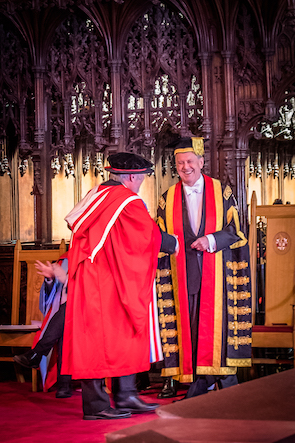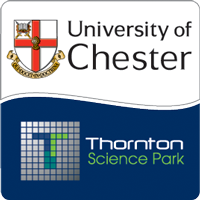Professor Nigel John is awarded a Doctor of Science degree
Professor Nigel John has been awarded a higher doctorate – a Doctor of Science (DSc). It is only the second time the University of Chester has made such an award, and the first to one of its own members of staff.

A higher doctorate is an exceptional award made “for work of high distinction which constitutes an original, sustained and significant contribution to the advancement of knowledge or the application of knowledge where it establishes that the applicant is a leading international authority in the field of study concerned. The applicant’s published work must demonstrate an originality such as to have led to extension or development by others.”
The work listed below was selected by Prof John as a representative sample from the 195 published articles from his research career to date. His research has been mainly focussed on the application of visualization and virtual environments to medical applications. The goal has been to improve the treatment and diagnosis of different ailments to the benefit of both healthcare professionals and their patients.
-
Barry, C. D., Allott, C. P., John, N. W., Mellor, P. M., Arundel, P. A., Thomson, D. S., & Waterton, J. C. (1997). Three-dimensional freehand ultrasound: image reconstruction and volume analysis. Ultrasound in Medicine and Biology, 23(8), 12091224.
-
Vidal, F. P., Bello, F., Brodlie, K. W., John, N. W., Gould, D., Phillips, R., & Avis, N.J. (2006). Principles and applications of computer graphics in medicine. In Computer Graphics Forum (Vol. 25, No. 1, pp. 113-137).
-
John, N. W. (2007). The impact of Web3D technologies on medical education and training. Computers & Education, 49(1), 19-31.
-
Vidal, F. P., John, N. W., Healey, A. E., & Gould, D. A. (2007). Simulation of ultrasound guided needle puncture using patient specific data with 3D textures and volume haptics. Computer Animation and Virtual Worlds, 19(2), 111-127.
-
John, N. W. (2008). Design and implementation of medical training simulators. Virtual Reality, 12(4), 269-279.
-
Thomas, R. G., William John, N., & Delieu, J. M. (2010). Augmented reality for anatomical education. Journal of Visual Communication in Medicine, 33(1), 6-15.
-
Coles, T. R., Meglan, D., & John, N. W. (2010). The role of haptics in medical training simulators: a survey of the state of the art. IEEE Transactions on Haptics, 4(1), 51-66.
-
Coles, T. R., John, N. W., Gould, D., & Caldwell, D. G. (2011). Integrating haptics with augmented reality in a femoral palpation and needle insertion training simulation. IEEE Transactions on Haptics, 4(3), 199-209.
-
ap Cenydd, L., John, N., Bloj, M., Walter, A., & Phillips, N. (2012). Visualizing the surface of a living human brain. IEEE Computer Graphics and Applications, 32(2), 55-65.
-
John, N. W., Phillips, N. I., Cenydd, L. A., Coope, D., Carleton-Bland, N., KamalyAsl, I., & Gray, W. P. (2015). A tablet-based virtual environment for neurosurgery training. Presence: Teleoperators and Virtual Environments, 24(2), 155-162.
-
John, N. W., Pop, S. R., Day, T. W., Ritsos, P. D., & Headleand, C. J. (2018). The implementation and validation of a virtual environment for training powered wheelchair manoeuvres. IEEETtransactions on Visualization and Computer Graphics, 24(5), 1867-1878.
-
Chen, M., Gaither, K., John, N. W., & McCann, B. (2019). An information-theoretic approach to the cost-benefit analysis of visualization in virtual environments. IEEE Transactions on Visualization and Computer Graphics, 25(1), 32-42.


